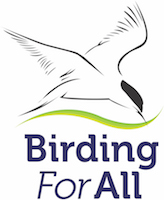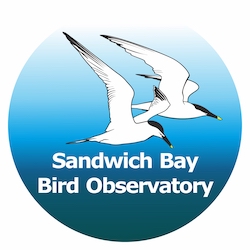GOB 28 – A Wing and a Prayer…
This article is also a ‘podcast’ on Talking Naturally – see Podcast page for link
God knows our birdlife has suffered at our hands for centuries, and, despite being more enlightened we are indirectly harming them more and more. Things were bad enough when we thought it OK to shoot out ‘pest’ species like Red Kites and put songbirds in tiny cages for our amusement. Things really started getting worse half a century ago when we killed off most of the birds at the top of the food chain by our profligate use of DDT and the rise of agribusiness replacing old fashion farming has led to the wholesale reduction of farmland species numbers. Yup, there’s no doubt about it, human greed just goes on making things worse and worse for mother nature- by now she must be ruing the day she allowed us to rise from the slime and inherit the earth.
A few years back some of us knew that Global Warming was a real and growing problem, now only a handful of people refuse to acknowledge its existence, and they, by and large, have a vested interest in denial; whether it be avaricious industrialists using up all of fossil fuels or the selfish owners of private jets squandering their inheritance.
It no longer matters whether Global Warming is a natural phenomenon or a purely man-made one; because there is no doubt that our profligacy makes things worse. Rich people and powerful nations press for changes in the use of hydrocarbons by emerging economies, while hiding behind carbon offset schemes themselves, but we ALL now have to address the issue or our children will suffer the consequences.
So what has this got to do with birding?
Well, quite simply, it’s crucial! Right now the minor change in each year’s average temperature is enough to ensure that the world’s ice is being released at an alarmingly increasing rate to swell our oceans. Less ice means more warming so the pace is exponential – the worse it gets, the worse it gets!
Birders are already noticing the change in patterns of breeding, migration times and nesting attempts. Complacently, we are braced to suffer the loss of some species from Britain while consoling ourselves with the knowledge that we will gain of others to take their place, but this is a shortsighted and selfish view. [Anyway, who knows of this normal ‘island equilibrium’ will stand in the changing climate]
Conservation, like charity needs to start at home so we have to ask what importance does Britain have ornithologically, when, after all, we have either ‘one’ or ‘no’ endemics dependent on your view?
Well for a start, these islands have always been strategically important to the avian world – a massive feeding station for birds on the move. Moreover, we are the breeding home to very significant populations of some species, especially seabirds, and the wintering grounds of high percentages of the world population of some species of wildfowl and waders.
Our cold-water seas have feed in abundance (so long as we don’t take it all for ourselves or vacuum it up for fertilizer), yet a generally mild national climate allows for long seasons. Millions of northern breeders over winter, millions of southern birds come for summer. This is not just a measure of the nations’ avian credentials but our joy as birders.
Unhappily, as climate shifts far quicker than it did in geological times, species have no time to adapt. While climate change is small, weather patterns are massively disrupted and disruptive. Ask yourself how often, in the last two or three years, you’ve heard a weather report finish with the phrase “…since records began”. Meteorologists predict more extreme weather events than ever before.
Like many of you, I always spend New Year’s Day birding, trying to see some of the special winter birds that make it down to the furthest southeast corner of the UK. This year was notable both for the lack of species and low numbers. One of my regular stops on the circuit is a large deep lake normally holding a smattering of Smew, a good head of Goldeneye and maybe the odd Mandarin as well as many hundreds each of Tufted Duck, Teal, Pochard & Wigeon. This year there was a grand total of just seven ducks, all of them Gadwall!
Dungeness, usually one of the best places in these islands to see Smew had just four! There is not even the consolation there of the flock of Ruddy Duck that were finally shot out by last year. Local orchards that normally overflow with winter thrushes held a small percentage of the usual numbers. In December I was treated to a garden record of five blackcaps many more of which now overwinter in southeast England and beyond. Contrast this with last winter when, for the first time in a decade I had to clear snow from my front steps.
I can count on the fingers of one hand the number of days that there has been a wind from the east in my part of the world – since last Spring! Migrants were harder to see – they flew over high in warm, windless weather and left on winds from the west so didn’t bother to drop down into local hedges and clifftops. Unpredictable, unseasonal weather is the average birds worst enemy, reducing food at crucial moments, causing ‘wrecks’ or inducing untimely behaviour.
To leave our children a birding heritage, or a world our grandchildren can survive in, ALL of us must do more than complacently drive to the local bottle bank or buy a bag for life! Make this the year you helped turn the tide!





